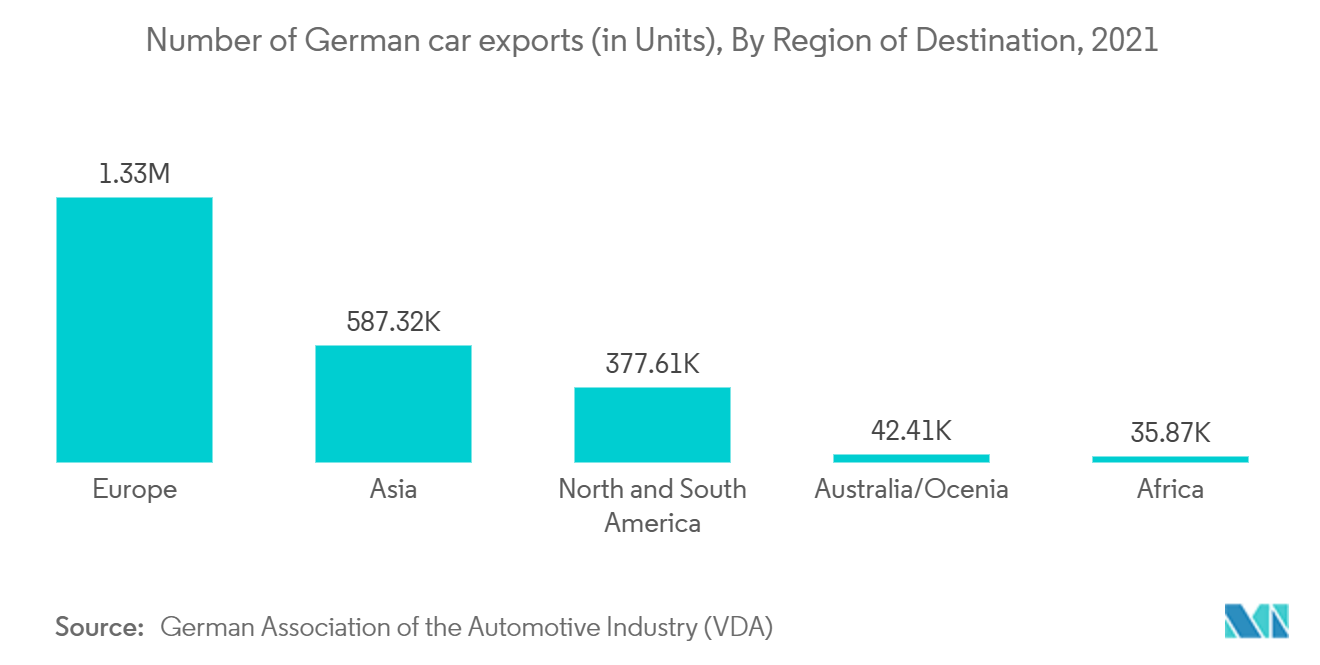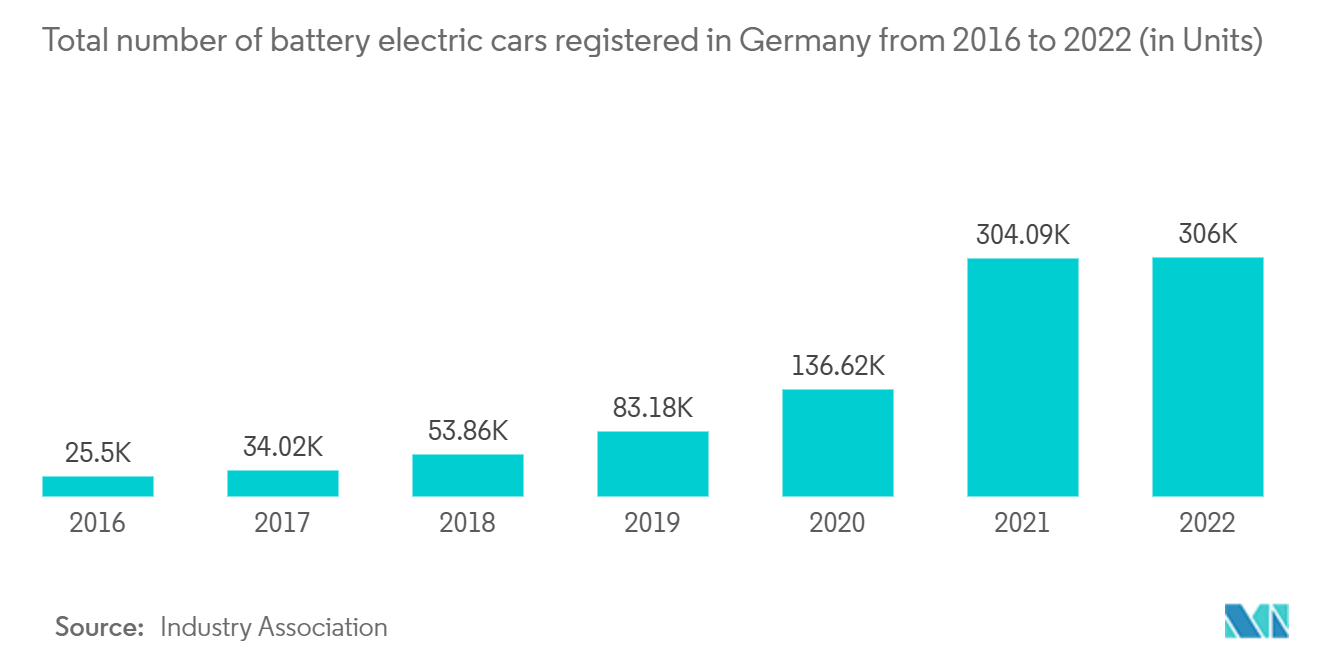Market Trends of Germany Automotive 3PL Industry
Automotive Exports driving logistics market
Germany is the second most populous and has the largest economy in Europe. There are technically 74 ports in the country, the major ones being the ports of Hamburg, Duisburg, Rostock, and others. Cars are one of the most traded goods in the world, and Germany, going by its reputation in the automobile industry, has always had consistent growth in this segment. Export expectations in the manufacturing sector of Europe's largest economy rose in July, with the automotive industry among the biggest winners. It is a boon for a sector hit hard by the coronavirus pandemic.
Europe was Germany's leading car export partner in 2021, with around 1.3 million vehicles. However, this was a decrease compared to the year before. The German automobile industry is indispensable to the country's image on the international industrial stage. Based on the number of vehicles produced in Germany, Volkswagen was in the lead for several years and was a popular brand in other countries. The German automobile industry saw falling employee numbers in recent years.
During a lockdown, the pandemic stopped production at some sites, which happened when companies were already struggling to move away from diesel- and gasoline-powered cars and toward "green" electric vehicles. This hit the car industry, the main driver of Germany's export-based economy. Daimler flagged signs of recovering demand for top-end Mercedes-Benz models and electric vehicles. Volkswagen expects slight growth in China's premium car segment this year.

Electric vehicles in German automobile market is Driving the Market
According to the German Association of the Automotive Industry (VDA), electric vehicles accounted for 30.4 percent of new vehicle registrations for the first time in October. Germany witnessed the registration of 178,800 cars in October, of which 54,400 were electric vehicles. That's due to the current dynamics of the market. The profit margins for electric vehicles are currently quite high. The German state subsidizes EV purchases with up to 6,000 euros. In August 2021, Germany reached its target of one million registered battery-electric and plug-in hybrid vehicles, per government resources. Volkswagen plans to sell 50% of EVs by 2030 and nearly 100% by 2040, while Daimler, which owns the Mercedes-Benz marque, plans to go all-electric by 2030.
In the first half of 2022, 306,000 e-cars were registered in Germany. This means that every fourth new car already has an electric drive. German corporate brands led the way with a market share of 59 percent. The drivers are battery-electric passenger cars, which account for 55 percent of all new e-car registrations (+13 percent). Three of the top four manufacturers in the domestic e-car market are German companies. Currently, there are already around 80 e-models on offer, and by 2024, this number will almost double to around 150 models. On June 1, 2022, the stock in Germany was around 1.4 million electric cars. The innovation dynamics of the automotive industry can also be seen in the patent statistics. More than half of the patents registered for e-drives come from suppliers and manufacturers in Germany.


